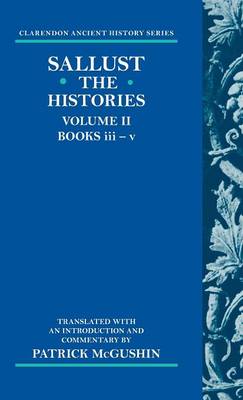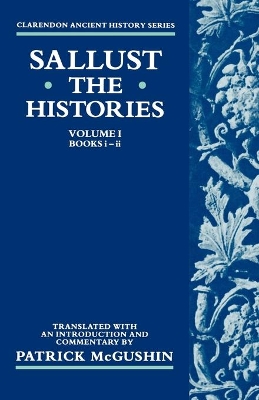Clarendon Ancient History
3 total works
The period covered by Sallust's Histories - 78-67 BC - forms part of the less well-documented eras of the late Republic. Sallust's contribution, despite its fragmentary transmission (about five hundred fragments of narrative, four speeches, and two letters preserved intact), remains of major importance to ancient historians. For nearly a century, scholars have consulted the edition of B. Maurenbrecher (1891-3) - a work, for its time, of
considerable merit. Continuing research on the period has produced material with a bearing on the interpretation of the text; in addition, several fragments not known to Maurenbrecher have subsequently been discovered.
For this new translation, Dr McGushin has freshly revised Maurenbrecher's placement and ordering of the fragments, and incorporated this newly discovered material. Together with a comprehensive introduction, he also provides a detailed interpretation in the first ever full-length commentary on the work.
considerable merit. Continuing research on the period has produced material with a bearing on the interpretation of the text; in addition, several fragments not known to Maurenbrecher have subsequently been discovered.
For this new translation, Dr McGushin has freshly revised Maurenbrecher's placement and ordering of the fragments, and incorporated this newly discovered material. Together with a comprehensive introduction, he also provides a detailed interpretation in the first ever full-length commentary on the work.
Sallust (86-35 BC) was a historian of major importance, writing at the time of the late Roman Republic. This is the first ever full-length commentary and English translation of one of his major works, the Histories, covering the years 78-67 BC, one of the least well-documented periods of the era. The translation is based on a text freshly examined for the first time since the original edition of 1891-3, and also includes newly discovered
material.
material.
The period covered by Sallust's "Histories" - 78-67BC - forms part of one of the leas well-documented eras of the late Republic. Sallust's contribution, despite its fragmentary transmission (about 500 fragments of narrative; four speeches and two letters preserved intact), remains of major importance for ancient historians. For nearly a century, scholars have consulted the edition of B. Maurenbrecher (1891-3) - a work, for its time, of considerable merit. Continuing research on the period has produced material with a bearing on the interpretation of the text; in addition, several fragments not known to Maurenbrecher have subsequently been discovered. In this edition, Dr McGushin examines Maurenbrecher's placement and ordering of the fragments, and together with his translation, provides a full-length commentary of the work.


